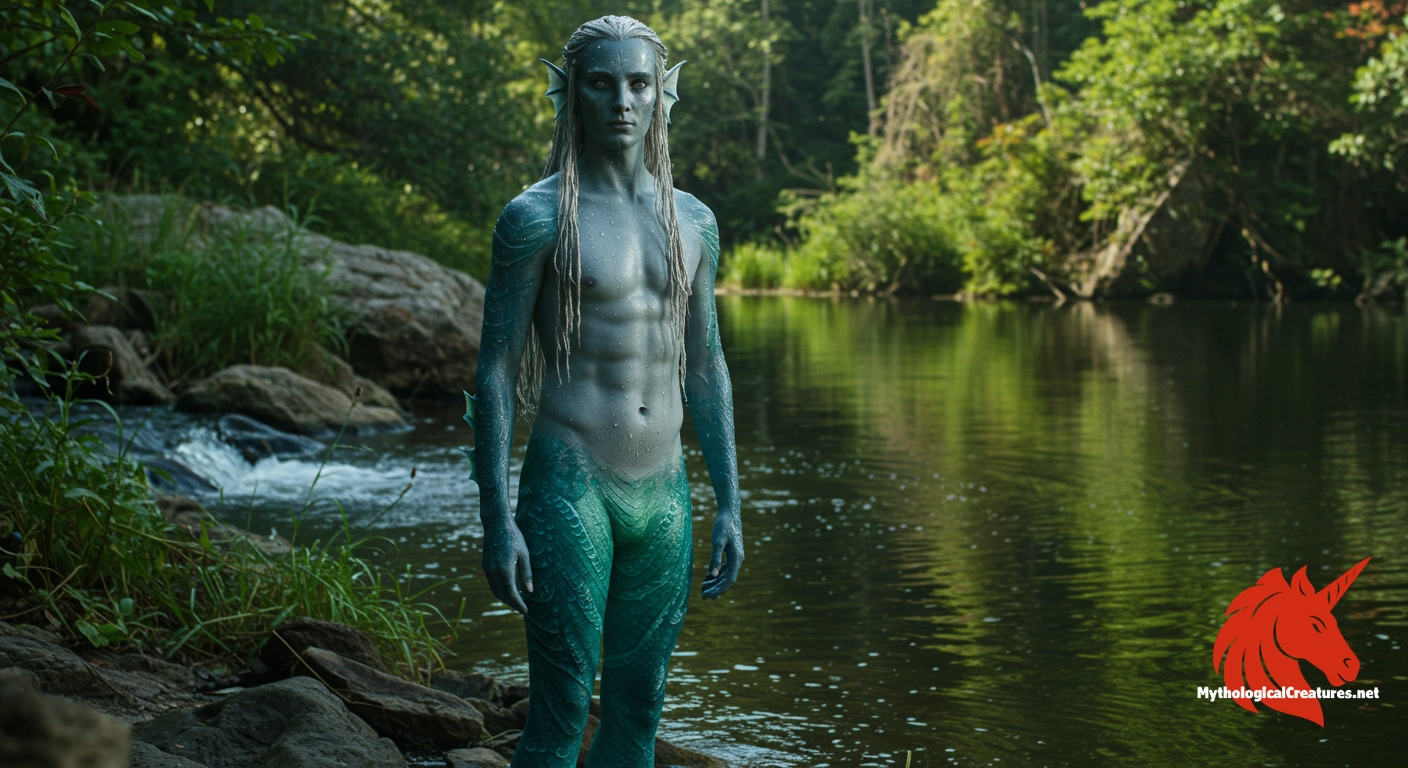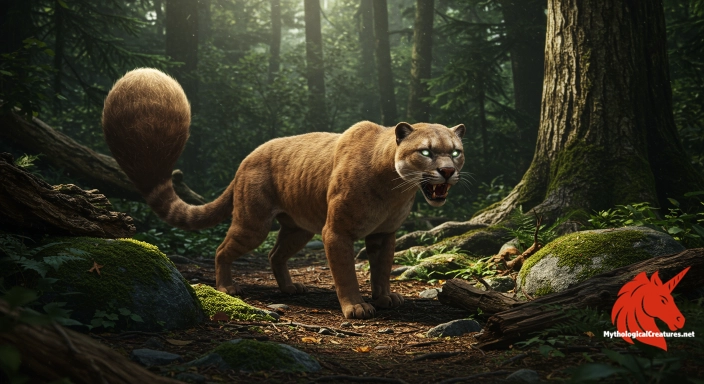Irai Ningthou: Irai Ningthou is the divine male personification of water in Sanamahism, the indigenous religion of Manipur.

Irai Ningthou
Irai Ningthou - Represents the life-giving and purifying aspects of water in Manipur's indigenous traditions.
Origins & First Encounters
Irai Ningthou stands as a central figure in the ancient spiritual traditions of Manipur, embodying the divine male aspect of water in a culture where nature and the sacred are intricately intertwined. His epithet, meaning 'King of Water', encapsulates a profound reverence for the life-sustaining and transformative power of water. Emerging from the rich heritage of Sanamahism, his origins are interlaced with centuries of oral lore and ritual practices passed down among the Meitei people. Early attestations of his existence are found in traditional ceremonies and communal recitations that celebrate the natural elements. His divine presence is often intertwined with seasonal cycles, symbolising both renewal and fertility. In many narratives, he is portrayed as an inexhaustible force that governs the rivers, lakes, and other water bodies of the region. As the consort of Irai Leima, his character is further enriched by the depiction of a balanced partnership that mirrors nature’s harmony. The deity’s influence extends into everyday life, where festivals and rites reaffirm the significance of water as a sacred element. His enduring legacy continues to inspire reverence and a deep cultural connection with nature among the people of Manipur.
Source Texts & Tale Variants
The story of Irai Ningthou has been meticulously preserved through a variety of traditional media, ranging from ancient palm-leaf manuscripts to intricate temple carvings. Ritual chants, recited during seasonal festivals, include verses dedicated to his watery dominion and evoke the mystique of this revered deity. Folktales and local ballads offer a window into numerous story variants, each celebrating his role as both nurturer and guardian of the water bodies. These oral traditions, handed down through generations, have served as an invaluable reservoir of cultural memory. Diverse accounts often highlight his benevolent interventions during the floods and droughts that shape the agricultural calendar of the region. In some versions of the myth, his presence is invoked during the ceremonial purification rites that symbolise a new beginning. The multiplicity of sources, whether through poetic recitations or ritualistic narratives, underscores the dynamic and evolving nature of his myth. Each variant contributes a unique perspective, enriching the overall tapestry of his identity. The convergence of these traditional texts and ritual accounts provides a multifaceted understanding of Irai Ningthou’s place in Manipur’s spiritual milieu.
Form & Powers
Descriptions of Irai Ningthou’s physical form evoke the ever-changing nature of the water he rules. He is often portrayed with a luminous complexion that seems to shimmer like the surface of a tranquil lake under the soft glow of the moon. His eyes are depicted as deep and reflective, mirroring the mysterious depths of sacred waterways. Artistic renditions frequently capture his flowing, cascade-like hair, symbolising the ceaseless flow of rivers and streams. His traditional attire is adorned with intricate motifs that resemble the undulating curves of water, lending him an aura of dynamic grace. While some representations emphasise a robust and statuesque presence, others depict him with an ephemeral quality, as if he might dissolve into mist at any moment. The variance in his portrayals allows for a rich interplay between the idealised and the elemental characteristics of water. Through these visual details, Irai Ningthou is celebrated not just as a deity, but as a living embodiment of nature’s fluid and multifaceted essence.
Regional Faces
Within Manipur, the veneration of Irai Ningthou takes on diverse expressions that reflect local customs and geographical influences. Different communities within the region interpret his myth in ways that align with their unique cultural and environmental contexts. In some areas, he is not only revered as the patron of water but also as a guardian of agricultural abundance and seasonal prosperity. Villages celebrate his spirit with dedicated ceremonies at the onset of the monsoon, marking the rejuvenation of rivers and lakes. Artistic depictions, along with temple sculptures, reveal subtle regional variations that underscore his multifarious nature. Certain local traditions place a greater emphasis on his protective qualities, while others highlight his role in bestowing blessings upon the natural world. This regional diversity in worship and imagery underscores the adaptive nature of myth-making in response to local experiences. Each community’s interpretation adds depth and texture to the legacy of Irai Ningthou, reinforcing his integral role in the cultural landscape of Manipur.
Cultural Parallels
Irai Ningthou shares a number of compelling similarities with water deities found in various mythological traditions around the world. Much like Poseidon in Greek lore or Neptune in Roman mythology, his domain over water imbues him with a dual character of benevolence and formidable power. His governance of both the nurturing and destructive aspects of water is reminiscent of Varuna, the ancient deity in Hindu traditions who upholds cosmic order. Such parallels highlight a universal recognition of water as an elemental force that is essential for life and yet capable of great upheaval. Across different cultures, the interplay between water and divinity often manifests through rituals, symbolism, and artistic expressions. The legend of his consort, Irai Leima, further echoes the motif of duality found in many mythologies, where complementary forces maintain the balance of nature. These cross-cultural connections illuminate a shared symbolic language that venerates the elemental, uncontrollable aspects of water. In comparing these diverse narratives, one can appreciate how Irai Ningthou serves as a regional reflection of a global archetype. His story, therefore, is not isolated but part of a broader tapestry that celebrates the universal mystique of water.
Legacy & Modern Evolution
Over time, the depiction of Irai Ningthou has transitioned from purely mythological narratives to a symbol rich in cultural and environmental significance. His ancient legacy, originally preserved through oral traditions and ritual practices, now finds expression in modern art, literature, and community festivals. Contemporary reinterpretations of his myth have emerged in visual media and performance art, linking traditional narratives with today’s aesthetic sensibilities. Modern celebrations in Manipur continue to incorporate rites that invoke his blessing, reaffirming his ongoing relevance in daily life. His enduring image is increasingly recognised as a symbol of the vital interplay between humans and the natural world. In academic and popular circles alike, there is a renewed interest in exploring how ancient deities like him reflect contemporary environmental and social concerns. The evolution of his iconography serves as a bridge between the timeless qualities of nature and the evolving cultural identity of the region. As a potent emblem of water’s life-giving properties, Irai Ningthou inspires a modern dialogue about sustainability, heritage, and spiritual connectivity. Through this evolving legacy, his myth remains a dynamic part of the cultural landscape, continuously adapted to meet the aspirations and challenges of new generations.
Interesting Fact
Irai Ningthou is uniquely significant as a water deity in Sanamahism, highlighting the deep cultural reverence for aquatic elements in Manipur’s indigenous spirituality.
Quick Creature Info
Features:
Associations:
Our Mythic Legendary Rating:

Habitat:
Supernatural Powers:
Physical Attributes:
Abilities:
Behavior:
Lore:
References
Discover Another Mythical Legend You May Not Have Heard Of?
Uncover the mysteries of ancient folklore and expand your knowledge of legendary beings from cultures around the world.
Dare to Meet the Ball-tailed cat....
Mythical Disclaimer: The images and data on this site are derived from various historical and literary sources, but we have found that many myths often have multiple versions and interpretations across references, sometimes contradictory. As a result, these creature depictions are artistic interpretations—imaginative blends of folklore, legend, and a dash of AI guesswork. Because creature descriptions vary widely, our illustrations and accompanying information represent our best effort to honor mythology while bridging creative gaps. Enjoy these interpretations—just remember, we've done our best to respect the stories and validate available data, but in the realm of mythology, details often shift, imagination leads the way, and nothing is ever set in stone!
Curated by the Mythological Creatures Team (rev. May 2025)
